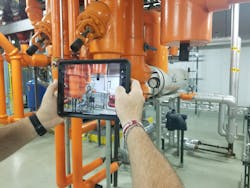Proactive and preventive equipment maintenance is a moving target at most facilities—a challenge compounded by the sheer volume of equipment needed to keep a building up and running and built environments which may encompass many acres or even miles.
For the facility teams responsible for maintaining equipment, getting a current snapshot of what’s happening with every piece of equipment can be daunting. Often team members rely on the memories of those who’ve been around for 20 or 30 years to answer questions about equipment—especially the older pieces scattered all over the place.
Making critical decisions about hundreds of pieces of equipment is mind-boggling, particularly when current equipment information isn’t always available or accurate. Keeping equipment databases up to date is practically a full-time job.
Many organizations have been forced to move from a preventive/proactive equipment maintenance model to a deferred maintenance or run-to-fail model. Facilities are living, breathing environments—constantly changing, evolving, and growing. Constant change is just a part of life.
While most facilities professionals agree that it’s best to be very proactive in the preventive maintenance aspects of facilities management, that’s not always so easy—especially when many organizations are running at 70-80% staffing levels.
“Our staff receives alerts to service specific equipment or replace certain parts on that equipment in a preventative manner and hope that the equipment would not fail and cost us even more money to fix in the long run,” said Byron Woods, the Dean of Facilities at College of the Sequoias.
He added, “Equipment is going to fail. Fortunately, in recent years, our department has received a lot of money from both the state and the district to be very proactive with our preventative maintenance.”
Woods and his team took this opportunity to invest in air quality, replacing and upgrading HVAC units, package units and filtration measures.
At one of his campus sites, Woods and his team are weighing an important decision about maintaining a chiller or replacing it right now to get another 20 years of usage.
“It’s tough because it works perfectly fine, but I know that I’m going to need to replace it in 10 years,” he said. “I’d rather invest in it right now and get a brand-new unit.”
Where to Start
Most agree that the number one goal is just to get caught up on the maintenance of all mechanical related equipment, whether it's HVAC equipment, boilers, water heaters or pumps.
Wayne Saya from SUSTAP, LLC Facilities Profiling & Engineering, said that the approach he’s found most useful is to conduct an Equipment Needs Analysis, which is a written review of the various systems and the individual pieces of equipment (from electrical to mechanical) tied to the operation of each system. He’s used this approach on projects such as the 1912 Copley Plaza hotel in Boston and the vintage 1950’s International Monetary Fund (IMF) headquarters building in Washington, DC.
“It’s sort of like a hipbone to shinbone approach. You can end up finding a water valve or an electrical safety switch you never knew existed,” he said.
Dakeem Coleman, Senior Facilities Manager, Gennao, added, “One of the easiest fixes or tools to have is a proactive backlog list/program and a proactive maintenance program that is viewed by many, managed by few, and constantly trained upon by everyone so the newest technician to the senior maintenance manager are well aware of what maintenance is needed, when it is needed, and how to retrieve parts/materials to complete the maintenance.”
Samantha Howell from EMCOR Services Fagan has first-hand experience with equipment information filling 4-inch binders lining bookshelves in facility managers’ offices, containing blueprints, equipment locations, repair histories, install dates and other lifecycle management information.
“When we had employees that spent a lifetime at a location, this information was usually available, albeit in their heads,” she said. “Fast-forward to today’s climate where we do not have that lifetime employee, it becomes critical that we migrate that information into the digital world. Knowledge capture and knowledge transfer are more important than ever before.”
Keys to Maintenance Success
Facility and equipment data must be presented in a way that’s interactive, dynamic, and highly visual, so equipment locations can be easily found, maintained, and logged. The sheer number and complexity of equipment needed to keep a building up and running and safe for staff and visitors requires a technology-driven approach to information accessibility.
Relying on memories to identify and prioritize maintenance needs is a recipe for failure. If only a handful of people know where things are located or know how to fix something, those are single points of failure. Successful teams have a systematic equipment maintenance program that can be accessed either at a desk or in a mechanical room or on a rooftop in the field. That is the recipe for success.
About the Author
Jack Rubinger
Jack Rubinger, ARC Facilities, is a regular contributor to publications, covering industries such as facility management, manufacturing, healthcare, higher education, technology, sports and the arts.
